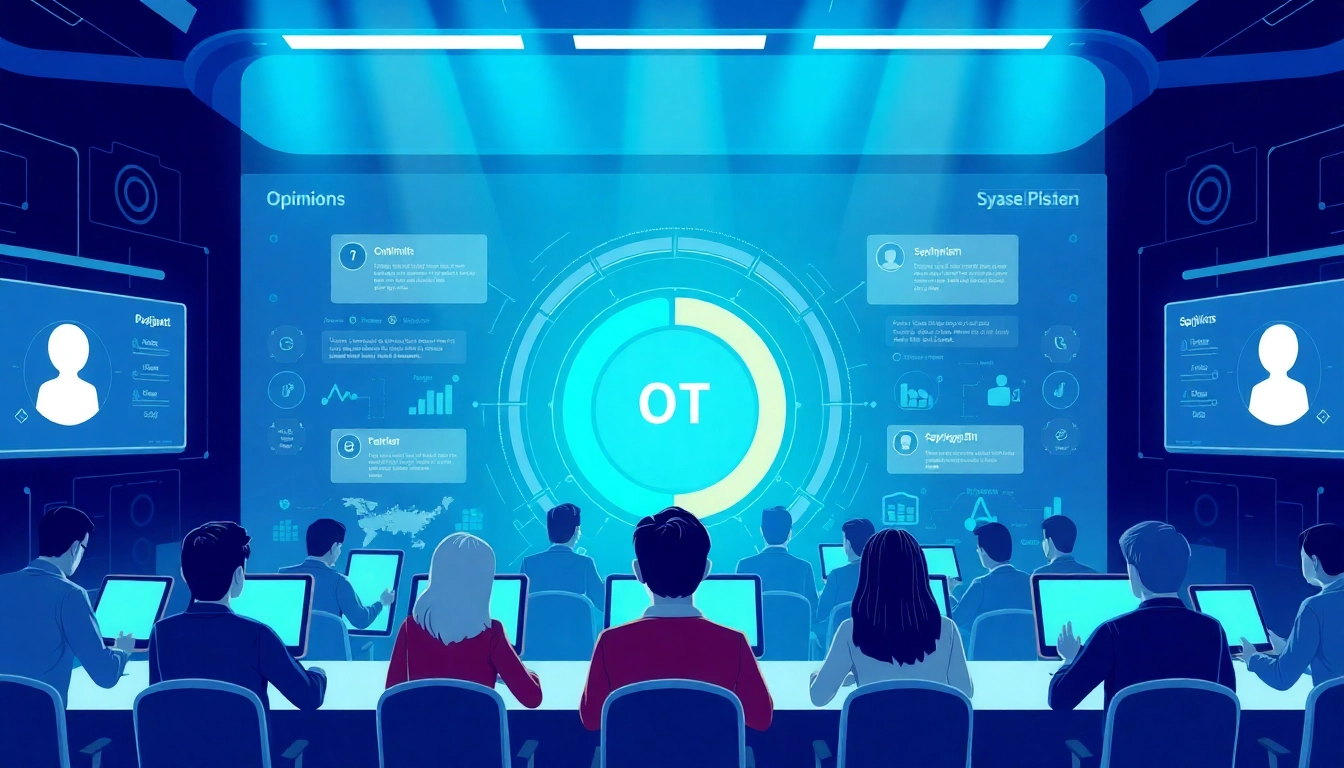Understanding Funnels for Clubs and Organizations
What are Funnels for Clubs and Organizations?
At their core, funnels for clubs and organizations represent the structured journey that potential members, supporters, or participants take from first interaction to becoming active contributors. Much like marketing funnels, these frameworks streamline communication, engagement, and participation, enabling clubs and organizations to effectively manage relationships with their audience. By mapping out the different stages—awareness, engagement, and commitment—leaders can craft targeted strategies that resonate, enhancing both retention and growth.
In essence, a funnel outlines every step your audience takes, starting from initial awareness about your organization right through to deeper engagement. Whether it’s a community club, a sports team, or a non-profit organization, understanding this journey can powerfully enhance outreach and build stronger connections. Funnels for clubs and organizations not only help to attract new members but also ensure that current members remain engaged and committed to the goals of the organization.
Importance of Funnels in Group Engagement
Funnels play a critical role in group engagement for several reasons. Firstly, they provide a clear framework for understanding how individuals interact with your organization over time. Recognizing these stages allows clubs to curate personalized experiences that cater directly to the needs and interests of their members. This tailored approach fosters a sense of belonging, significantly increasing the chances of member retention.
Moreover, by analyzing funnel data, organizations can identify bottlenecks and areas for improvement in their engagement strategies. For example, if a significant number of individuals drop off during the registration phase, it may indicate that the onboarding process requires streamlining or that additional support is necessary to guide newcomers.
Interestingly, funnels are not just about acquisition; they also encompass member engagement and retention. By continuously nurturing existing members through thoughtful content and opportunities for involvement, clubs can transform initial interest into long-term loyalty. Consequently, effective funnel strategies can lead to sustainable growth, enhancing both recruitment and retention rates.
Types of Funnels for Different Types of Organizations
Different types of organizations may require unique funnel structures tailored to their specific goals and target audiences. Here are a few examples:
- Community Clubs: These often focus on local engagement and can benefit from funnels that emphasize awareness-building initiatives, such as social events and outreach programs.
- Sports Teams: Sports-centric organizations might structure funnels around the excitement of game days, ticket sales, and fan engagement, highlighting pathways to deeper involvement like memberships or volunteer opportunities.
- Non-Profit Organizations: Non-profits often use funnels that educate supporters on their mission, leading to donation drives and opportunities for volunteerism, driving commitment to a cause.
By identifying the unique demands of each organizational type, clubs can customize their funnels to meet the specific needs and preferences of their target audiences, ensuring that individual experiences resonate on a personal level.
Building Effective Funnels for Clubs
Identifying Your Audience and Their Needs
The foundation of an effective funnel lies in understanding your audience. This process begins with thorough research to identify the demographic characteristics, motivations, and challenges faced by potential members. Conduct surveys, host focus groups, or utilize social media analytics to glean insights that inform funnel design.
For example, if your club aims to attract younger members, engage them through platforms they frequent, providing content they find relevant and enticing. Conversely, if targeting older demographics, consider more traditional communication methods that match their preferences. Knowing your audience allows you to tailor messaging and determine the most effective channels for engagement.
Creating a Step-by-Step Engagement Plan
Once your audience has been identified, the next step is to develop a step-by-step engagement plan that guides potential members through each phase of the funnel. This plan should seamlessly transition between different stages, with appropriate touchpoints and content that resonate with audience needs.
For instance, an engagement plan might start with a free workshop or event, enticing individuals to learn more about your organization. Following this initial interaction, subsequent communications could include newsletters featuring success stories, highlighting active member contributions, or announcing upcoming events.
Involving existing members in this plan is essential, as peer influence can significantly enhance engagement levels. By fostering a community of active participants who champion your organization’s mission, you can effectively encourage newcomers to transition through the funnel.
Utilizing Resources to Support Your Funnel Structure
An effective funnel is supported by a range of resources including technology, content, and human capital. First and foremost, employing customer relationship management (CRM) tools can help you nurture leads, track interactions, and analyze data that informs your strategies. These tools can also automate follow-up communications, ensuring timely engagement that keeps your audience interested.
Moreover, high-quality content is crucial for driving engagement. Articles, videos, webinars, and testimonials can all be integrated at various stages of the funnel to provide value and deepen connections. It’s essential that content remains relevant to your audience’s interests, answering their questions and addressing pain points throughout their journey.
Finally, involving volunteers and staff in funnel creation and maintenance can help ensure successful implementation. When team members are aligned with the organizational goals and understand their roles within the funnel, the entire engagement process runs more smoothly.
Measuring Success of Funnels for Organizations
Key Metrics to Monitor Engagement
To effectively measure the success of your funnels, defining key performance indicators (KPIs) is essential. Some common metrics organizations might consider include:
- Conversion Rate: This measures the percentage of potential members who move through the funnel stages to become active participants.
- Engagement Rate: Evaluate how frequently members participate in events or initiatives.
- Retention Rate: Monitor how many individuals continue to engage with your organization over time.
By establishing clear metrics, organizations can gauge the effectiveness of their funnels and make adjustments as necessary to enhance engagement.
Adjusting Strategies Based on Analytics
Analytics play a vital role in the continuous refinement of your funnel strategies. By regularly reviewing data on member interactions, demographic insights, and engagement levels, organizations can gain valuable lessons about what works and what doesn’t.
For example, if data indicates a significant drop-off at a particular stage of the funnel, conducting a deeper analysis to understand why this is happening can inform necessary adjustments. This may involve revisiting content decisions, communication frequency, or even the events offered.
Indeed, adjusting strategies based on analytics not only helps improve the funnel but also fosters a culture of agility within your organization, allowing you to respond to shifting audience needs more effectively.
Comparative Analysis of Funnel Performance
Another important component of measuring success involves conducting comparative analysis of funnel performance. Organizations can assess different funnels side-by-side to determine which are more effective in attracting new members and which channels deliver higher engagement rates.
Implementing A/B testing can also provide critical insights. By presenting two variations of a marketing email or content piece, organizations can glean which engages recipients more effectively, thus further refining their strategies for consistent improvement.
Ultimately, comparative analysis supports continual learning and adaptation, ensuring that club and organizational efforts are always aligned with the best practices in engagement.
Best Practices for Implementing Funnels
Common Mistakes to Avoid
While building effective funnels is crucial, avoiding common pitfalls is equally important. Some frequent mistakes organizations make include:
- Neglecting Follow-Up: Failing to follow up after initial contact can lead to lost opportunities for deeper engagement.
- Poor Targeting: Implementing a one-size-fits-all approach without understanding your audience’s needs can diminish funnel effectiveness.
- Inconsistent Messaging: Divergent messaging can confuse prospects and hinder their progression through the funnel.
By remaining vigilant about these potential missteps, organizations can safeguard the integrity and effectiveness of their funnels.
Effective Tools for Funnel Creation
The right tools can significantly enhance the effectiveness of your funnel creation and management. Some of the key tools that organizations might consider include:
- CRM Systems: Platforms like HubSpot or Salesforce can streamline communication and track engagement metrics.
- Email Marketing Software: Tools like Mailchimp or Constant Contact enable automated follow-ups and personalized content delivery.
- Analytics Platforms: Google Analytics provides insights into web traffic and user behavior, essential for evaluating funnel performance.
Combining these tools strategically empowers organizations to create a seamless and efficient engagement process.
Engagement Techniques Tailored to Organizations
To maximize the effectiveness of your funnels, organizations should employ tailored engagement techniques that resonate with their audience. Techniques could include:
- Personalized Communication: Segment communications based on member interests and preferences to enhance engagement.
- Community Building Events: Host online and offline events that allow members to connect with one another, fostering a sense of belonging.
- Inclusive Content Creation: Encourage members to contribute content that reflects their experiences, generating connection and ownership.
Using these techniques, organizations can create meaningful interactions that transcend transactional relationships, instead fostering lasting bonds between members and the organization.
Examples of Successful Funnels in Action
Case Studies of Effective Funnels for Clubs
Examining successful case studies can provide valuable insights into effective funnel strategies. One notable example includes a community sports club that successfully increased its membership through a strategic funnel. The club hosted introductory free training sessions, gradually followed by engagement-focused workshops that showcased the benefits of membership. Communication was tailored based on attendee feedback, leading to a significant rise in sign-ups.
Another illustration might involve a local non-profit that kicked off a campaign targeting awareness. They utilized social media to promote engaging content that illustrated their impact, followed by personalized invitations for potential supporters to join volunteer efforts. This direct engagement translated well into increased volunteerism and donations.
Lessons Learned from Successful Implementations
Analyzing successful implementations yields important lessons, including the value of data-driven decision-making and ongoing engagement. Consistently tracking metrics permits adjustments and refinements aligned with audience needs. Communication should be open and inviting, encouraging potential members to share feedback and experiences.
Moreover, fostering genuine relationships is paramount. Successful cases highlight the significance of treating members as integral parts of the organization, creating advocacy and loyalty.
Adapting Successful Models for Your Organization
Lastly, organizations can benefit from adapting successful funnel models to their unique contexts. By reviewing how other clubs have navigated their engagement processes, leaders can distill actionable insights that fit their goals and audience characteristics. It is essential, however, to remain authentically aligned with your organizational mission and values while tailoring these strategies.
Moreover, continuous testing and refinement ensure that your adapted funnel remains effective and relevant in a constantly evolving environment. Cultivating a spirit of innovation within your team will support ongoing growth and member engagement.



